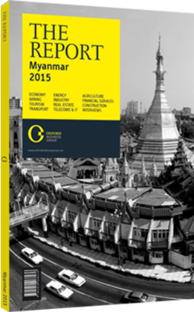Chairing ASEAN has boosted the country’s diplomatic position
Myanmar assumed the chairmanship of ASEAN in 2014, just three years after the government embarked on an ambitious programme of political and economic reforms that have opened the door to the international community after five decades of international isolation. President U Thein Sein, a former general who now heads a quasi-civilian government, told Myanmar’s ASEAN neighbours that it would use its leadership year to ensure the organisation accelerates its efforts to meet the deadline for the end of December 2015 to implement the ASEAN Economic Community (AEC) involving the creation of a single market and production base for the region. At the same time, he stressed how much Myanmar itself – the group’s poorest member – would be able to benefit from that programme. Closer integration would provide an opportunity for the country to learn from its richer neighbours, he argued.
Cool Runnings
Myanmar’s chairmanship of ASEAN proved more successful than many analysts had initially expected. Meetings have proceeded smoothly – the group holds around 1000 each year – despite Myanmar’s relative lack of diplomatic experience. The country has also helped keep a range of economic and political initiatives on track not only among member states themselves, but with major powers such as the US, Japan and China.
However, Myanmar’s year at the helm of ASEAN has also underlined the major challenges that it continues to face as it goes through a critical phase in its economic development. “Natural, cultural and demographic advantages are positioning the country for long-term success, but many challenges and potential pitfalls lie ahead,” the Asian Development Bank wrote in a September 2014 report on Myanmar, “Unlocking the Potential”. Such challenges include the absence of up-to-date infrastructure that already exists in the rest of the region, such as roads, ports and air links, a regular power supply, as well as a modern banking and financial system.
Diplomatic Mediation
Myanmar’s strategically important geographical position between the rising powers of China and India, as well as the export powerhouses of South-east Asia, gives it plenty of potential as an attractive destination for foreign direct investment. At the same time, it also leaves the country vulnerable to regional power rivalries.
The ASEAN Regional Forum discussed heightened tensions between China and other states, such as the Philippines and Vietnam, in the South China Sea in 2014. Myanmar, with historically close ties to China, performed a deft balancing act as leader of the regional grouping. “Myanmar has pursued relatively modest goals on the South China Sea issue, and has rather skilfully negotiated between pushing for a collective ASEAN position and deflecting China’s frustration,” Yun Sun, a fellow with the East Asia Programme at the Stimson Centre, wrote in a 2014 report. Even though South-east Asian concern over the maritime dispute with China had reached, as the report noted, an “all-time high”, the joint statement released at the end of the ASEAN meeting in August 2014 did not seek to apportion blame.
Cautious Optimism
Moreover, respondents to the US Chamber of Commerce’s ASEAN Business Outlook Survey named Myanmar as one of four ASEAN countries where they planned to expand in 2015, with many companies planning to diversify from the US into ASEAN. Some 91% of those surveyed said they expected higher profits from their business in Myanmar, noting the country’s large, low-cost labour force, high level of personal security, and the population’s positive views on the US.
Further progress towards the AEC should shore up Myanmar’s economic reforms, which are itself modelled on the development path taken by its neighbours many years ago. While that will be welcome news to investors, regional observers will keep a close eye on political developments in a country that is still grappling with the legacy of military rule.
You have reached the limit of premium articles you can view for free.
Choose from the options below to purchase print or digital editions of our Reports. You can also purchase a website subscription giving you unlimited access to all of our Reports online for 12 months.
If you have already purchased this Report or have a website subscription, please login to continue.

